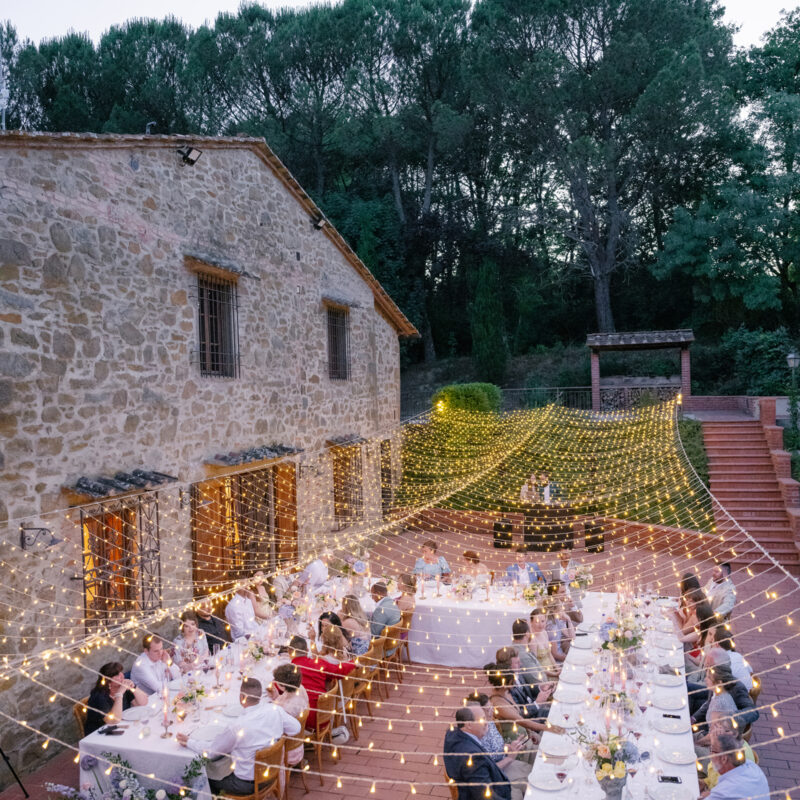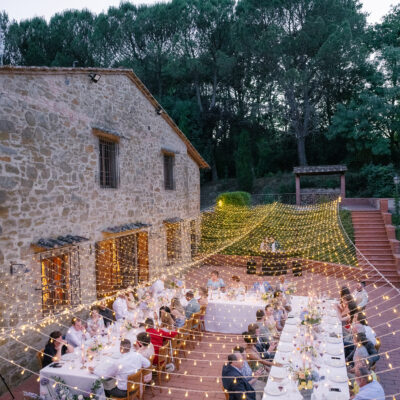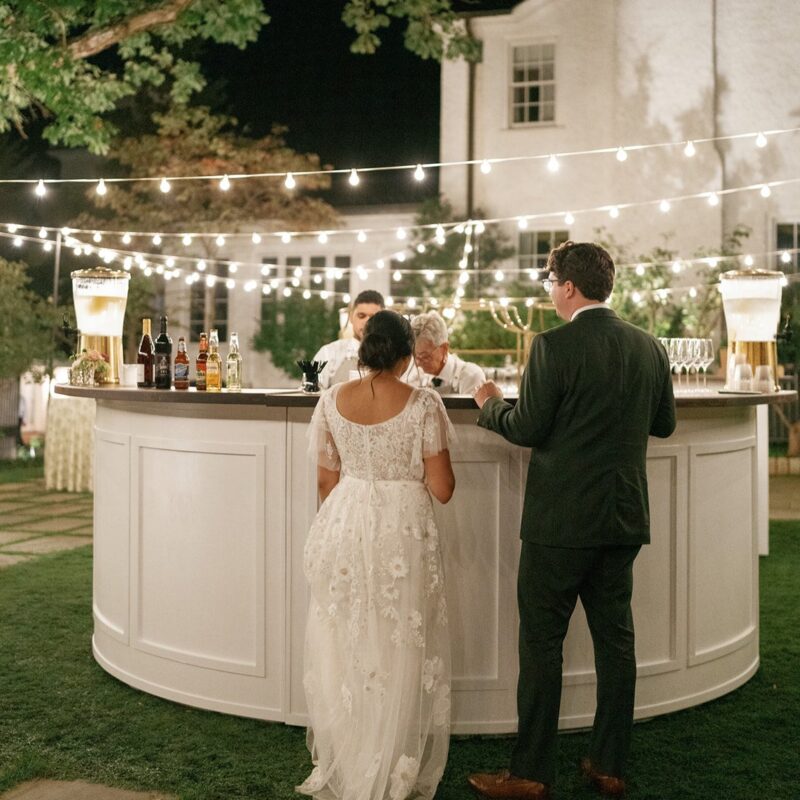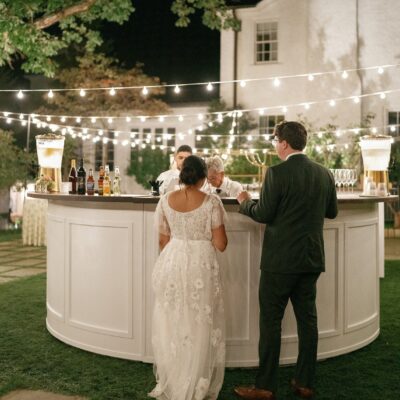In Fauquier County’s hunt country, the views are long. Roads gently rise and fall through open fields, passing horse barns, ponds and board fences, and in the far distance, the Blue Ridge draws a curving horizon. It feels like a place where the long vistas suggest a connection to the past. In this iconic setting, Ali and Peter Pejacsevich set out in 2010 to build a house that would honor the area’s history.
At the same time, the house needed to function practically for a contemporary family. The couple’s three children were quite young when they hired architect Adams Sutphin to envision their new home. “We wanted somebody who had historical knowledge of Virginia architecture,” said Ali. Sutphin brought to the table a traditional bent, but also a curiosity about ways to bend the traditions. “Doing that for a young couple was interesting for me,” Sutphin said. “They were willing to take some risks.”

Public spaces in the home are connected, so you can move through them. “And every room moves outward,” said Sutphin. Photo: Virginia Hamrick
From the exterior, the resulting house does look as though it could be much older than it is—a stucco-clad, highly symmetrical façade with a formal front entrance. “We wanted to make sure people come to the front door,” said Peter. Ali added, “Peter’s Austrian, so he has very defined ideas of what a house should look like.” That meant a certain amount of formality, and well-demarcated spaces.
Yet the couple also wanted a layout that would encourage flow and avoid “dead-end rooms,” as Sutphin put it. “Public spaces are connected, so you can move through. And every room moves outward.”
Indeed, the westward view from this open, slightly elevated site is magnificent—a far-reaching rural tapestry laced with stone walls and regularly traversed by foxhunts. “The house needed to address that view,” said Sutphin. The rear of the house, including living room, kitchen and most of the bedrooms, frames the landscape through many windows and French doors. “When you open the main door,” noted Peter, “you see right through” the French doors in the living room. Beyond them, a grade-level flagstone porch elegantly bridges indoors and out.

Walls and trim in nearly every room are painted the same color, allowing for an unexpected treatment on the doors: a heavy, glossy black lacquer, to echo the doors’ physical heaviness. Photo: Virginia Hamrick
Considered details
The house has a quiet luxuriousness, a result of clients’ and architect’s careful handling of details. For example, the exterior stucco is a traditional material that’s meant to age with character. “Most of the stucco you see today has a latex topcoat and looks plasticky,” said Sutphin. “Traditional lime stucco breathes, cracks and mottles.” Applying this to a frame-built house was a technical challenge, but worthwhile for the sense of patina.
Inside, wide-plank white oak floors, sourced through Mountain Lumber in Ruckersville, lend unity throughout the first and second floors. Walls and trim are, in many rooms, painted the same color. “That kept it calm,” said Sutphin, “and allowed us to have fun with the doors.” He suggested a bold choice for all the interior doors: glossy black paint, which provides a visual weight to echo the doors’ physical heaviness.
The eye for detail extends to the placement of wall switches (lower than the standard height) and outlets (in baseboards only). That way, said Peter, “you have a clean line.”

From every room—whether the expansive kitchen tailor-made for dinner parties, the master bathroom on the second floor with its marble-tiled shower or the huge kids’ play zone in the attic—the outside views beckon with a changing seasonal palette. Photo: Virginia Hamrick
Design for life
The Pejacseviches’ lifestyle is reflected in many of Sutphin’s major design moves. “The clients told me this area is beautiful but there are not a lot of places to go, so you entertain at home,” he explained. Ali, meanwhile, is “a fantastic cook” by her husband’s description. So the house needed a highly functional kitchen where guests could be nearby but not underfoot, while dining and living spaces had to be both inviting and clearly separated from each other.
“The way we entertain a lot,” said Peter, “is to have dinner—come into the dining room. This house invites you to do that.”
The solution was a living room as “defined nucleus” at the center rear of the house, Sutphin said, with other rooms connected to it by multiple openings. The kitchen flows easily into a butler’s pantry and then into the dining room. And a bumpout off the kitchen, designed around a 10-foot-long refectory table that the couple already owned, makes a light-filled breakfast nook and a place for visitors to locate, a few crucial feet from the action. It’s also, Ali said, a homework center—and she joked that it’s long enough that papers can be moved to one end while the family eats dinner at the other end.
“We use every inch of the kitchen,” said Peter. In its center, a nearly square Carrara marble-topped island provides a wide expanse of workspace. Understated white cabinets hide double refrigerators and dishwashers, while a six-burner Wolf stove becomes a focal point.
From the kitchen, the dining room teases the eye with its intensely red walls, playing against the black doors in the butler’s pantry. “I wanted a true red,” said Ali, and she got it—though the Benjamin Moore color was discontinued and the painter had to travel to Georgia in order to find enough old stock to do the job.
“At night, with candles, it holds you in,” said Ali. “It becomes incredibly cozy and warm.”
From every room—whether a private guest suite on the first floor, the master bathroom on the second floor with its marble-tiled shower, or the huge kids’ play zone in the attic—the outside views beckon with a changing seasonal palette and occasional equestrian passersby.
“Our most important objective,” said Ali, “was to build a house that did right by the land.”
The breakdown
5,300 square feet
Structural system: 2’x6′ wood stud, with TrusJoist TJI floors and roof framing
Exterior material: Three-coat stucco with lime-based finish coat
Interior finishes: Custom wide-plank pre-finished white oak floors from Mountain Lumber Co.; Statuary White marble countertops from Country Floors of America; Custom wood trim from Gaston & Wyatt
Roof materials: Prefinished metal standing seam roof with copper gutters and downspouts
Window system: Marvin Windows from Gaston & Wyatt
Mechanical systems: Geothermal heating and air
General Contractor: Miller and Blackwell Construction Inc. (Warrenton)






